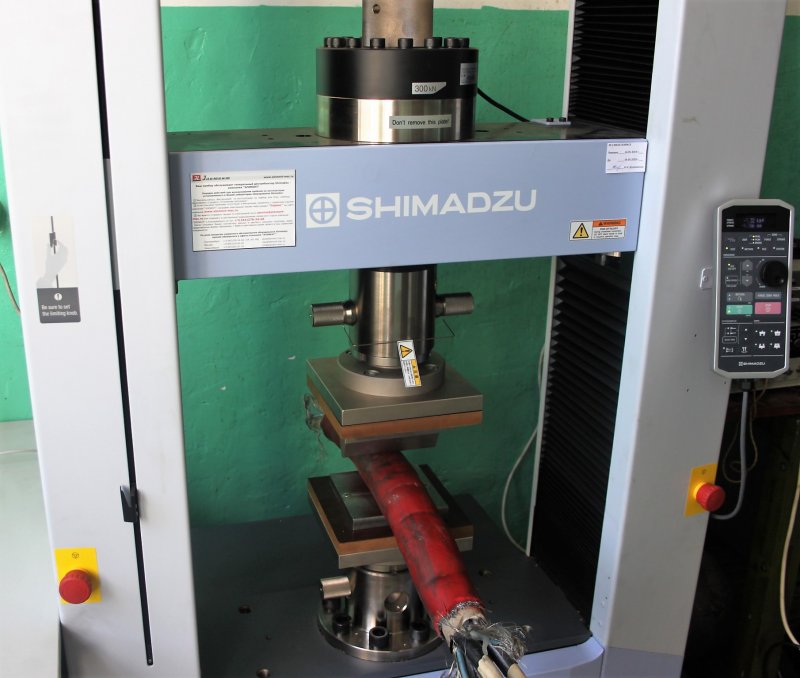NIKI launched new equipment for testing samples of mine and oil submersible cables
The Research, Design and Technological Cable Institute (NIKI, part of the Cable Alliance Holding, which unites the cable assets of UMMC) purchased new equipment to determine the physical properties of materials used for the manufacture of cable and wire products.
The cost of the universal testing machine from Shimadzu (Japan) exceeds 3 million rubles. Its technical capabilities allow you to create a load of up to 30 tons (300 kN), set the test rate and track the deformation of the sample in compression, bending, tension, etc.
"In accordance with the revised edition of the" Safety Rules in coal mines ", approved by Rostekhnadzor, the connection of mobile machines and mechanisms in the mine should be carried out using flexible cables, the design of which ensures the so-called early shutdown. That is, the cable must be disconnected if the outer sheath is damaged, before the insulation of the main conductors is touched and a short circuit occurs. NIKI developed an appropriate test procedure for mine cables. When preparing a sample for testing, a special device is connected that registers short circuits. High voltage is applied to the main conductors, then the sample of the cable is subjected to crushing load ", - explained Sergey Okunev, head of the scientific and technical department of JSC NIKI Tomsk.
In the process of crushing (compression), the protective circuit closes and short circuit of the main veins. At these moments, it is necessary to fix the time and calculate the difference, which is a characteristic of the early disconnection.
The universal testing machine allows testing cables according to a new method with different loads and at a given speed, automatically registering the necessary parameters, calculating the time between closings , which ideally should be at least 0.2 seconds. This is how long it takes for the mine automation to operate.
The new equipment also allows testing cables for submersible electric pump installations for crushing load resistance and evaluating the ultimate breaking forces of reinforcing elements when developing load-carrying cables.
